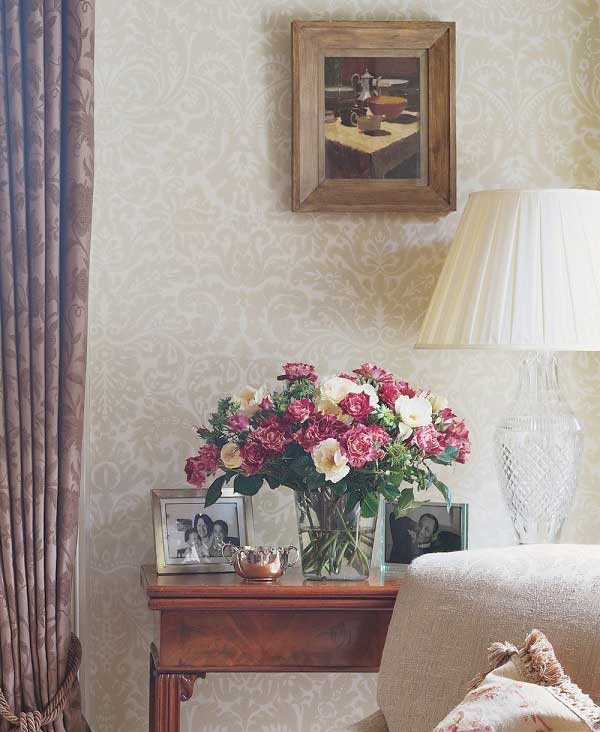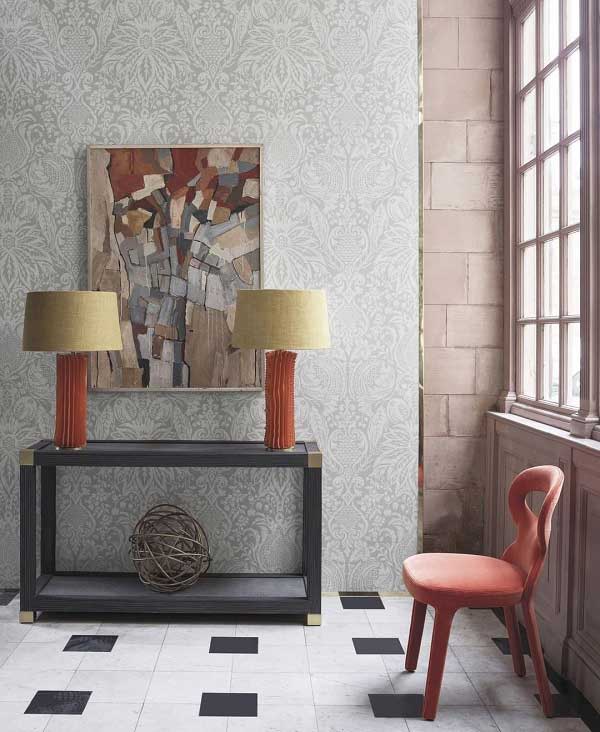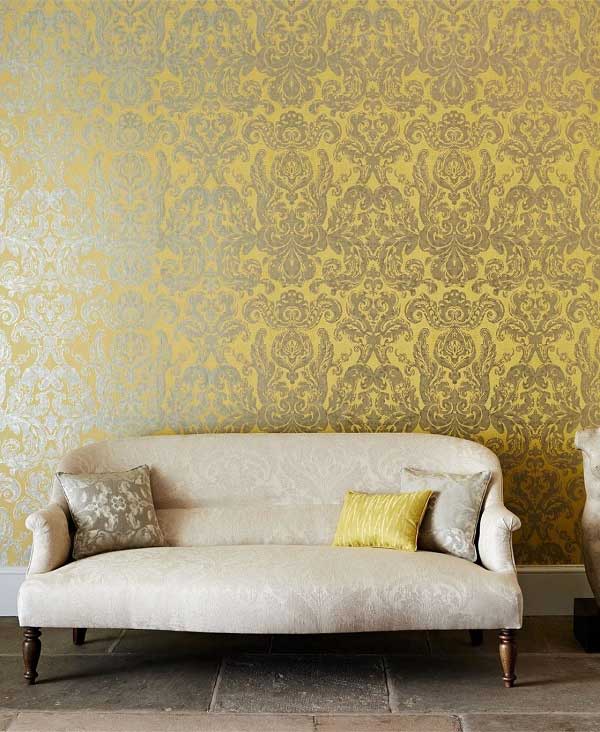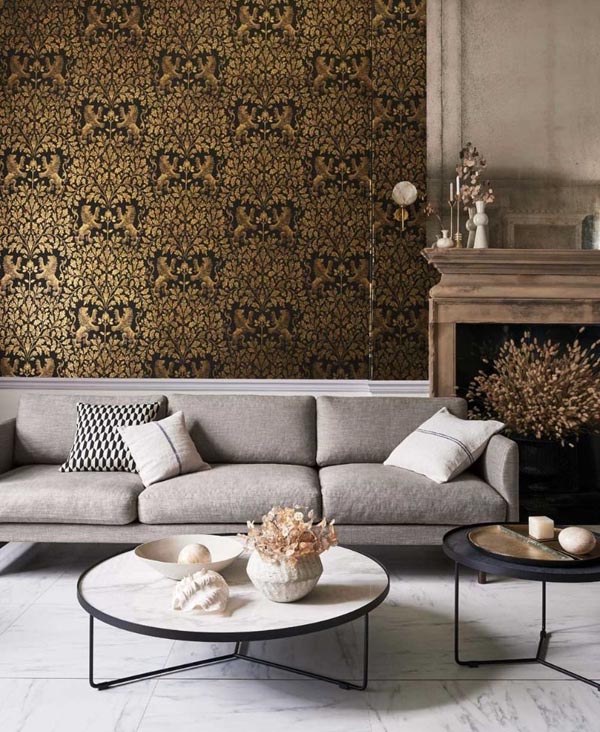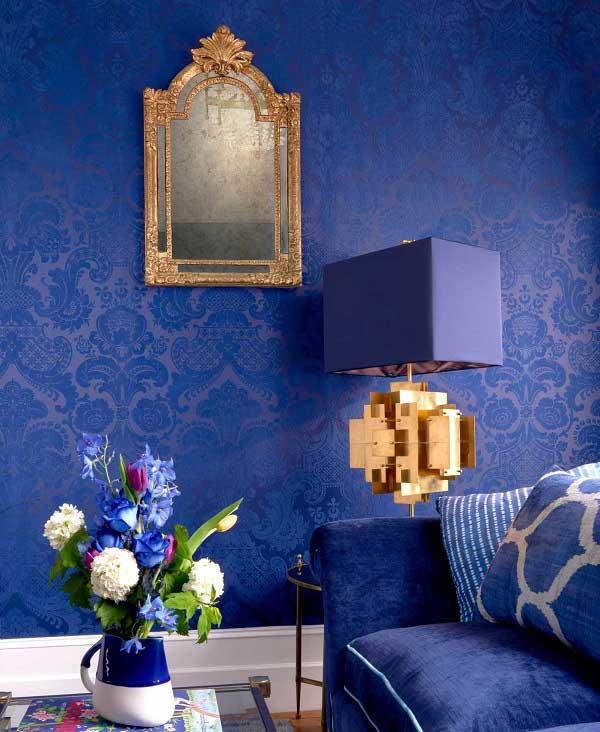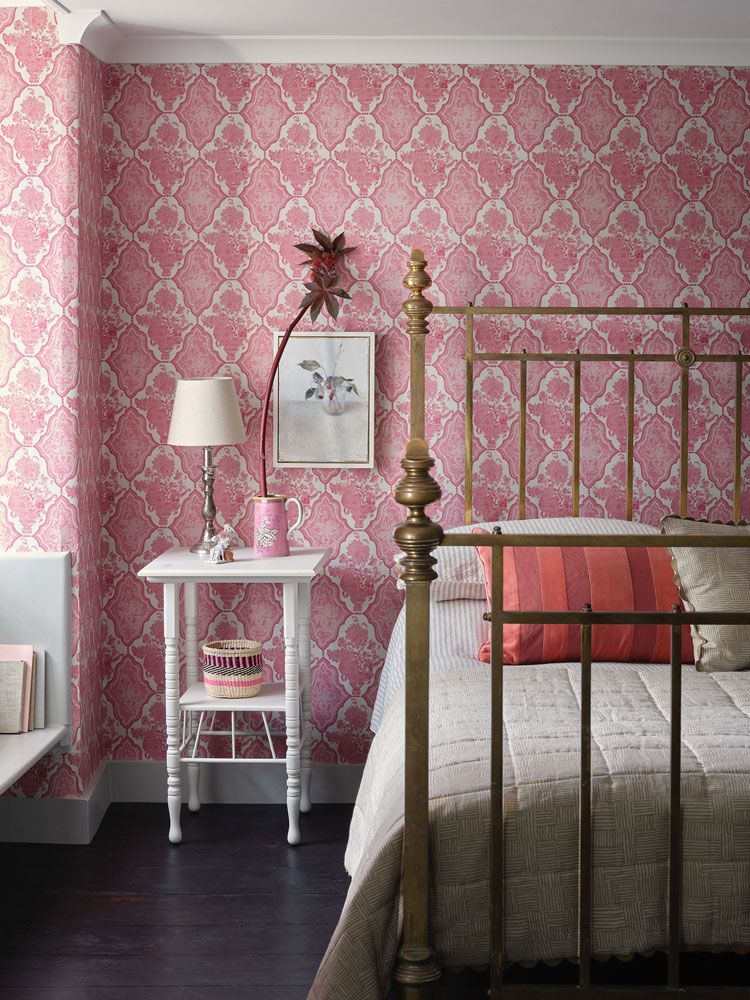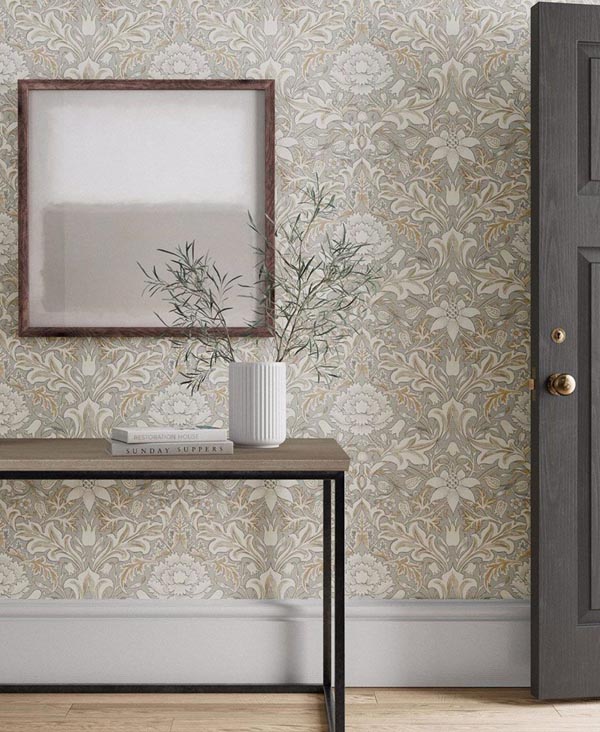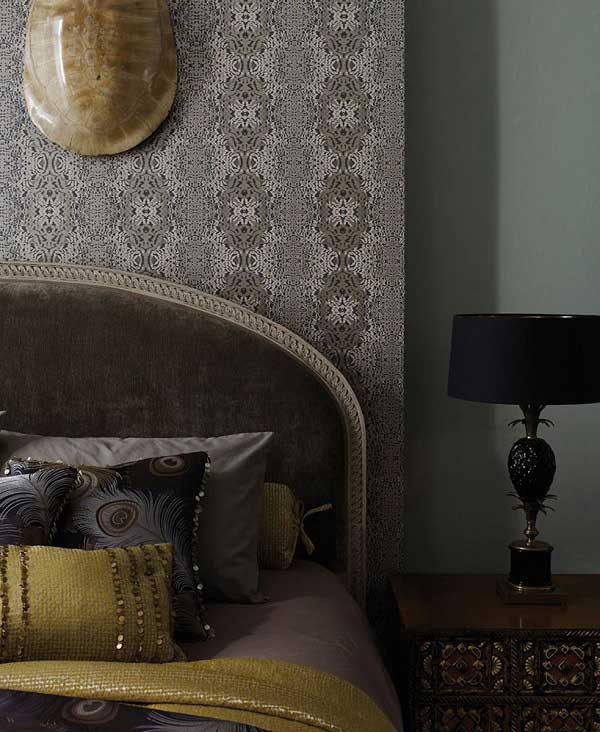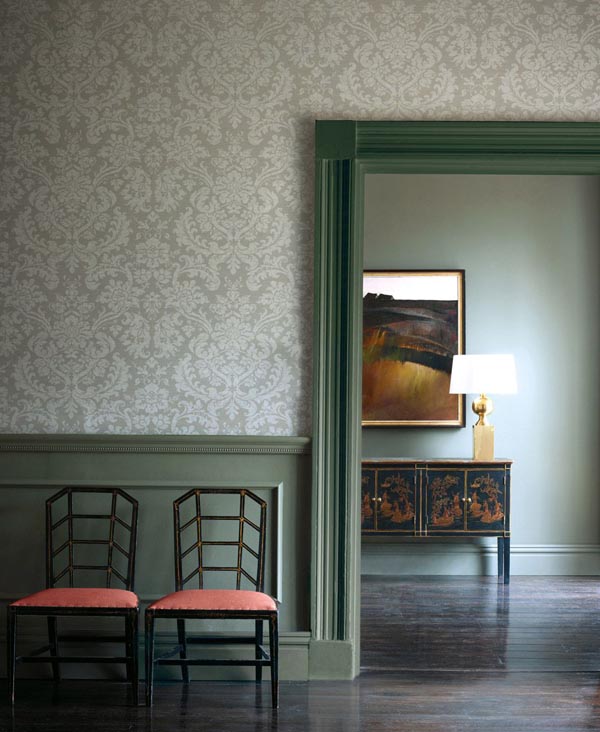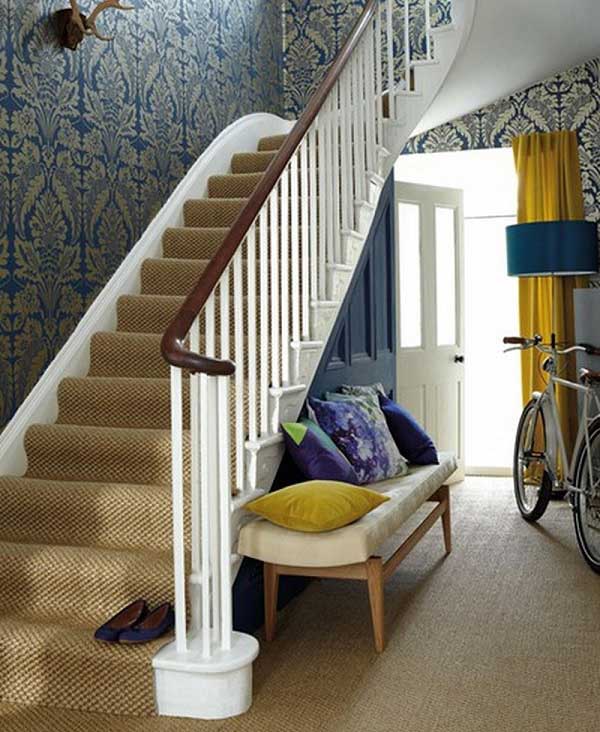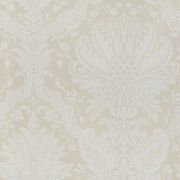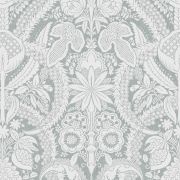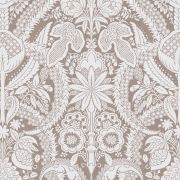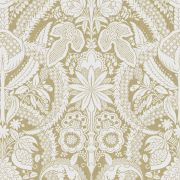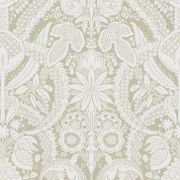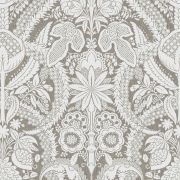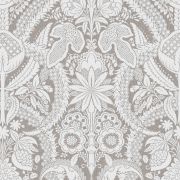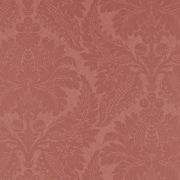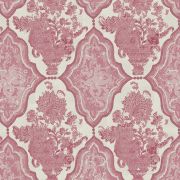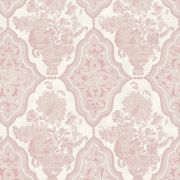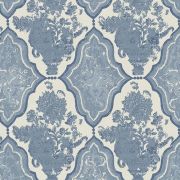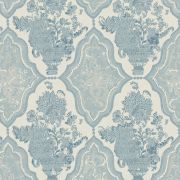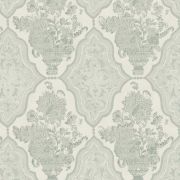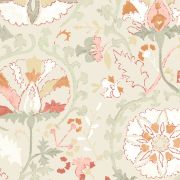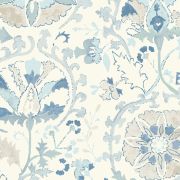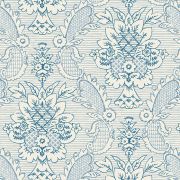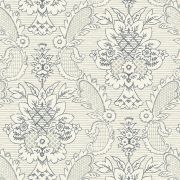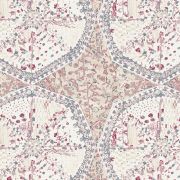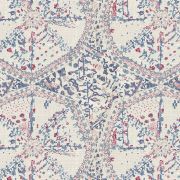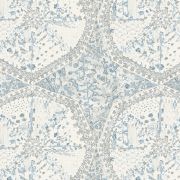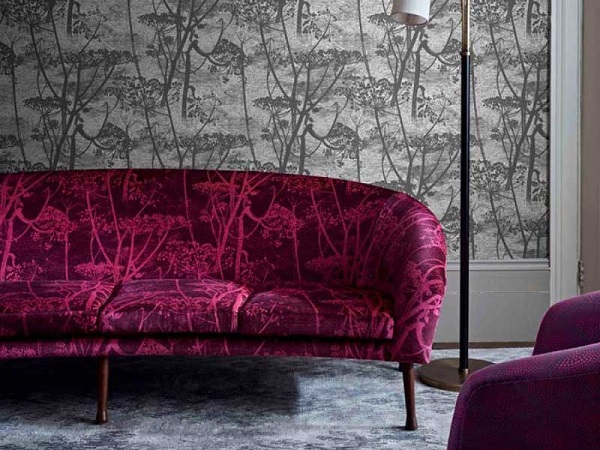Damask wallpaper was originally used in place of tapestries and/or made to match upholstery fabric. Therefore the designs were created to imitate these woven patterns. Damask fabric and its value came from the silk that was used to produce it. The weaving technique created a silk ground and a matte pattern. This was first done in one colour, tone on tone.
Thanks to new production techniques there has been a growing demand ever since Victorian damask wallpaper boomed in popularity. Its enduring success continues today; here's how to use damask wallpaper in your home.
Where to Use Damask Wallpaper
Damask wallpaper has been around so long and reinvented so many times that it suits properties from every period. The result is a lot of different types of damask wallpaper.
When choosing what damask wallpaper to use, first consider the home. When was the building built? What style is the property? What type of interior design has been chosen elsewhere?
This can make the choice between traditional and contemporary damask wallpaper very simple. The design can be selected to complement what already exists.
The choice can be narrowed down further depending on which room is being decorated. This includes the size of the space, the shape, how much light the room gets, and existing furniture.
These factors inform decisions like whether to use light shades or dark and the size of the pattern. Plus, which colours are best suited, which textures, and even what to match with them in future.
Knowing the different styles of damask wallpaper can help to hone in on options. An abundance of variations exist for every home and knowing the options will narrow the choices.
Here's some of the most popular damask wallpaper designs and how to use them.
What Are the Different Styles of Damask Wallpaper?
There are many variations of damask wallpaper due to its long history and demand. This includes the available colours, the materials, and the content. Smaller rooms are suited to a more subtle damask wallpaper with lighter shades and smaller patterns. Larger rooms, however, can pull-off bright, bold and show-stopping damask wallpapers.
Grey Damask Wallpaper
The first thing people consider when wallpaper shopping is the colour. Traditional damask wallpaper is only one colour in two different shades. This multitonal style is still very much sought after.
Grey has emerged as the most popular shade that people look for in damask wallpaper. This is likely because, like the style itself, it's versatile.
The right shade of grey and style of damask wallpaper can easily be used in both a Georgian home and a contemporary interior. Subtle tone on tone grey also prevents the pattern from being overpowering. Whereas, greater contrast on a grey damask wallpaper is more modern and suited to a feature wall.
The same goes for fabrics and furnishings. Bigger designs work wonderfully with bigger, boldern, and more modern furnishings. Whereas, a petite print looks at home alongside flowing drapes, elegant occasional chairs, and antiques.
The Meredith Damask Wallpaper is seen with a matching fabric for an demure style. Though, the similarly pale Mitford Damask Wallpaper also allows for modern furnishings and pops of colour.
Bold Damask Wallpaper
Traditional fabric designs and wallpapers are being re-imagined in bold hues that make an even greater statement. They are the ideal choice to hit on the trend of maximalism. Maximalism is based on the philosophy that more is definitely more. This includes the use of multiple vivid colours.
Contemporary damask wallpaper is perfect for this. It is, by design, a pattern that allows for multiple shades or colours. Additionally, it can be textured to ramp up a room's contrasting elements.
Historical wallpaper reproduced the silk and matte effect of damask fabric. A modern iteration is the Giselle Damask Wallpaper. It has a silky metallic rose gold ground making a nod to a very "now" colour. Yet, the trailing damask design has hints of the height of its fashion, the Victorian era.
Likewise the Brocatello Damask Wallpaper was inspired by a 19th century brocade fabric. It uses reflective inks for an extra dimension. It then has the appearance of a textured ground to mimic the original fabric.
The bold colours, vivid patterns, and modern compositions amplify the interior design of any room.
Metallic Damask Wallpaper
When adding a second colour to damask fabric first occurred it instantly became a trend. Adding gold to the weaving, in particular, was an extra mark of luxury.
The mix of metallic tones and damask has come back around as it's now a popular choice on damask wallpaper. There are subtle glints, metallic patterns, and full-on metallic backgrounds.
The choice of the metallic and the finish are what influences the impact of metallic damask wallpaper. Like all added elements, a hint of metallic is more of a classic style. Whilst, full on, glossy, shimmering metallic damask wallpaper is modern.
Kashgar Wallpaper, for example, has a two-tone gold leaf effect. This can be faint on first appearance when paired with a pale colour. It is, however, available in some much brighter shades.
Similarly, an antique gold ground can have a quieter impact on a room due to the subtlety of the tone. The Boscobel Oak Wallpaper design is a perfect example.
Textured Damask Wallpaper
Current production methods and the use of colour means that damask designs can be both modern and timeless in one rendition.
On the other hand, you have the Petrouchka Flock Wallpaper in brilliant accents. It creates a velvet effect in the fashion first introduced in 18th century France.
This flocked damask wallpaper is brought into the 21st century by the use of vibrant indigo. It's traditional and lavish; it has a splash of whimsy and yet it's assertive.
Textured damask wallpaper has more elements and is more complex making it a bigger focal point in a room. Matching with a neutral scheme can hand it center stage. Alternatively, playing to its tones can make it the maestro.
Damask Pattern Wallpaper
The damask pattern originated around the Silk Road. Therefore, many damask designs take inspiration from the Far East. It then re-emerged in Italy in the 14th century.
As Britain was a leader in the production of wallpaper, however, many of those designs can be traced there. It was during the Renaissance, however, that stylised acanthus leaves became a popular design. Something which continues in its prevalence on damask wallpaper.
This varied backstory has contributed to the wide selection of damask patterns on offer. Marmorino Damask Wallpaper, for example, is inspired by Rococo buildings. The white and pastel colours plus the scrolling curves exemplify the Baroque period.
The range of damask pattern wallpaper is one more reason why it fits so well in to so many homes. Not to mention, why it suits so many tastes.
Three Ways to Create a Feature Wall with Damask Wallpaper
A great way to use damask wallpaper in your home is as a feature wall as it brings interest to a room. It can also make a room seem bigger or add an extra pattern without being smothered by it. Damask wallpaper is the ideal solution to all these interior design conundrums. Here's three ways to make it work.
Idea One: Floral Damask Wallpaper
An older house or more understated interior design is the ideal partner for this feature wall idea. It's also the simplest to get right.
Once a damask wallpaper has been chosen then pick a matching paint. (Contact F&P Interiors for matching advice.) Et voila!
Extra points are won by using a darker shade of the same colour on the skirting-board. This provides the ideal framing and a stylish touch.
By being matchy matchy, the focus is kept on the wall without it overpowering the space. It's also ideally placed on the far end of a room or on a wall indentation. This elongates the space by focusing the eye. Moreover, it diminishes awkward angles.
Alternatively, use it on the chimney flume as it's a wall indentation where you want to draw attention. Otherwise, you risk splitting focus in the room between two focal points.
Idea Two: Contemporary Damask Wallpaper
A contemporary styling alternative for damask wallpaper is to use a paint in a complementing colour. The tones of the wallpaper can then be used in the furnishings.
This interior design idea is suited to modern houses and apartments. It allows a space to be matching but with greater depth.
Choosing muted colours prevents this feature wall from being OTT. It can then be paired with more textures and patterns.
The trick is to pick out tones and use them across the room in block colours whilst other patterns are used sparingly. This looks great on cushions, for example. That way the room remains balanced.
Turquino Wallpaper has been used as an accent wall with texture on the furnishings. Plumas silk has been used a complementing pattern. Whereas, a brown velvet material has been used for luxurious texture on the headboard. The result is an opulent, inviting, and modern bedroom.
Idea Three: Grey Damask Wallpaper
When in doubt, go with grey damask wallpaper as it straddles both traditional and contemporary. Not to mention, it's easy to create consistency with.
As in previous examples, matching grey with grey in a room provides a more traditional look. Yet, the pattern is what makes the difference here.
A large graphic print can be balanced by an updated motif. For example, the Borja Wallpaper is inspired by a 15th century Venetian design. It imitates lace over a subtly striped ground. The finish is both textured and has a sheen.
A damask wallpaper like this provides a lot of interest and intrigue. It is also easily coordinated with colours and furnishings.
The key here is light. Using a large amount of grey is best in a room that is exposed to more natural light. This lifts the space rather than shadowing it.
Under any other conditions, it's best to use grey sparingly as a feature wall or accent. As grey fits well with so many other colours, this doesn't limit your options in the slightest.
More Ways to Style Damask Wallpaper
Still unsure about where to use damask wallpaper? Here's some extra ideas that take minimal risk.
How about using damask wallpaper in a smaller space. This may be in a stairwell, hallway or foyeur. This allows for a bolder print as there's likely to be less furniture to accomodate.
It creates an interesting, fuss-free design choice, especially for high traffic areas. There doesn't need to be lots of things hanging on the walls or getting in the way. The damask wallpaper does all the work.
Finally, it completes the flow of a house by saving the space from looking like an after-thought.
There are, however, still other design features to play with. The paint for the trimmings, whether a bannister, skirting, doorways or windows. Then there's the carpeting and any curtains or blinds.
The outcome is then a tailored and practical space that looks effortlessly stylish and put together.
The final steps are simply to pick a design and learning how to hang wallpaper.
You May Also Enjoy Reading...
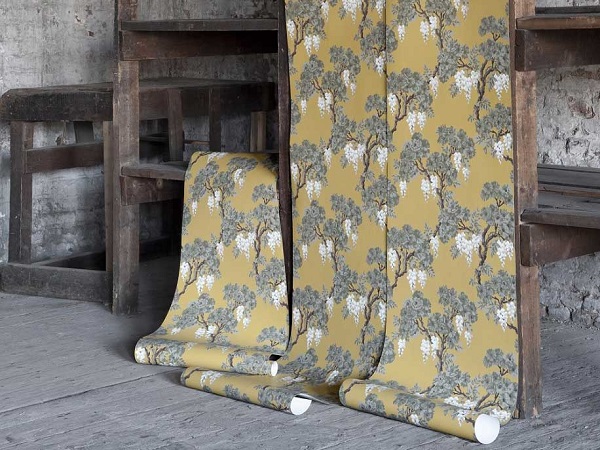

How to Hang Wallpaper
There are two methods for hanging wallpaper. There's paste the wall wallpaper and paste the reverse. The first may be recommended by the wallpaper designer or supplier but the latter is easier. We share everything you need to know.
- paypal
- visa
- mastercard
- amex

